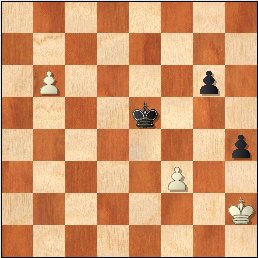
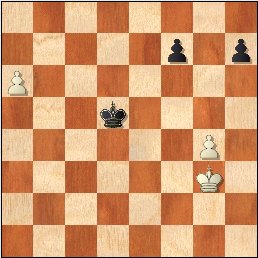
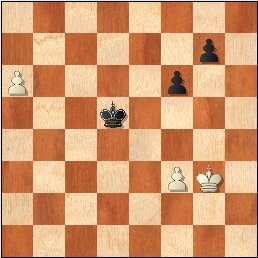
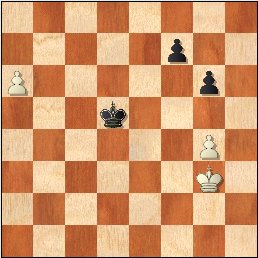
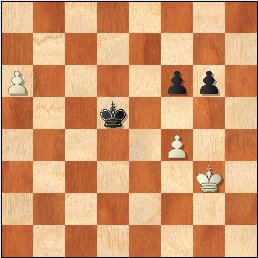
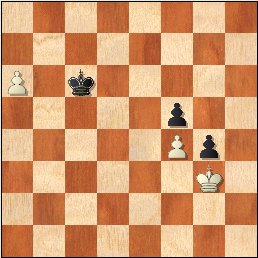
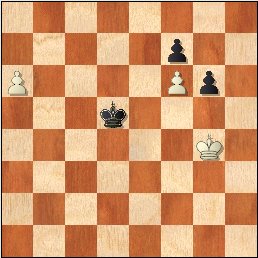

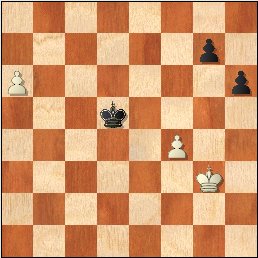
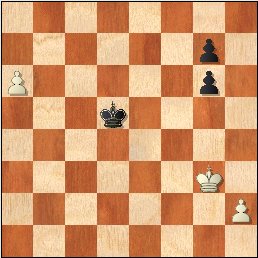
Improve your Chess via Active Learning
ACTIVE LEARNING is any strategy that involves students in doing things and thinking about the things they are doing (*)
You could study the following material either by skipping the test and going directly to the lecture. Or start by attempting to figure out on your own what is going on in each of the positions I will be talking about and then proceed to the lecture. If you chose the latter, spend time on each diagram and record your evaluation and move / plan for the side whose turn it is and sample variations. Then compare your ideas with mine. Let me know how you like the test and the lecture
Test yourself:
The question -
Review each position for 30 sec - 3 min (the higher your rating, the less time you should spend). What result do you expect and why? (White Win, Draw, Black Win)
Next, analyze to check your initial decision. Then read my article.
 |
||
| #1. Black to Move. | ||
 |
 |
 |
| #2. Black to Move. | #3. Black to Move. | #4. Black to Move. |
 |
 |
 |
| #5. Black to Move. | #6. Black to Move. | #7. Black to Move. |
 |
 |
 |
| #8. Black to Move. | #9. Black to Move. | #10. Black to Move. |
STOP - Lecture begins below.
King and a Pawn vs. a Pair of Pawns
Recently, while I was working on a Training course for www.Chess.com, I saw the following endgame from the Geller -Fischer (1965, Capablanca memorial):
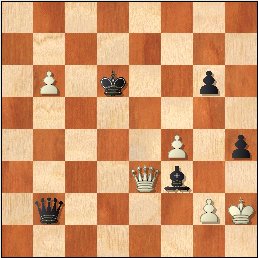 |
 |
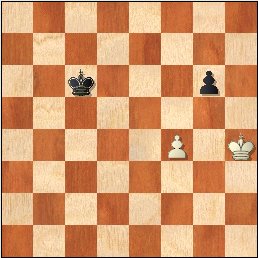 |
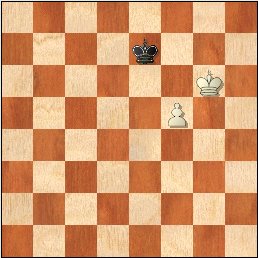 |
| #1 White to Move | 1-a Black to Move | 1-b White to Move | 1-c Black to move |
Geller had to make a decision - to capture the Bishop (1.Qxf3) immediately, or play 1.Qe5+ forcing the transposition into the pawn endgame. My guess that his decision wasn't that difficult as soon as he saw that he would be able to separate Black pawns after 1.Qe5+! Qxe5 2.fxe5+ Kxe5 (2...Kc6 3.gxf3 Kxb6 [3...g5 4.e6 and the King can't stop both White pawns] 4.f4 then the White K captures the Ph4, arrives to g5, and wins the Pg6 via a timely e5-e6+) 3.gxf3 Kd6 4.f4! (diagram 1-a) and now the Black g-pawn can't defend the h-pawn. Fischer resigned here, not waiting for 4...Kc6 5.Kh3 Kxb6 6.Kxh4 Kc6 (diagram 1-b) 7.Kg5 Kd6 8.Kxg6 Ke7 9.f5! (diagram 1-c) Kf8 10.Kf6 etc...
| I don't know about Geller, but as I was
reviewing the above example, I immediately thought of another position
that you may have seen before from the game Nimzowitsch, A -
Tarrasch, S (1911, San Sebastian) Black transposed into the pawn endgame after 1...Rxf5 2.Kxf5 and then played 2...a5 3.Ke4 f5+!! . White resigned as his pawns will be separated after 4. Kd4 (4.Kxf4 a4) f4! and then easily picked off by the Black King |
Black to move |
I provide very high-level answers for you to compare to what you should have come up with in 30 seconds - 3 min. Please check every position in detail on your own.
The #1 White wins as shown in Geller - Fischer above (1a).
The #2 White wins - the White King will easily win the Pawns while the Black King is dealing with the a-pawn.
The #3 White wins - he needs to send his King forward 1...Kc6 2.Kf4! (2.f4 g6 and Draw as White can't stop 3...g5) g6 (else 3.Kf5) 3.Ke4, then Kd5-e6 etc... When you do your analysis, one defensive idea you must check is - if the Black king has enough time to capture the a-pawn and then attack the f-pawn from e4.
The #4 White wins - he can freeze the Black pawns after 1...Kc6 2.g5!, then the White King will easily win the Pawns
The #5 Draws - White can't make progress as Black's push g5 can't be stopped.
The #6 Black wins - the white King can't leave the g-pawn, so the Black King can take time in capturing the a-pawn and then coming over the K-side, wining the f-pawn and the game. When you do your analysis, one defensive idea you must check is - if the White King has enough time to go after f-pawn, allowing the g-pawn to Queen, but getting his f-pawn advanced too. White is too slow!
The #7 Draw - similar to #6, but here the white King can go after the f7 pawn. Check your analysis.
The #8 Draw - the Black pawns securely defending each other and the best White can do is to trade 1 for 2. After 1...Kc6 2.Kh4 Kb6 3.Kg5 Kxa6 4.f4 Kb6 5.f5 gxf 6.Kxf5 and then Kg5-Kxh5
The #9 White wins - like in #8, the Black pawns securely defending each other, but they are not far advanced and White can forgo controlling the h-pawn. 1...Kc6 2.f5! (2. Kg4? g6=) Kb6 3.Kg4 etc... Please check the variation for yourself.
The #10. White wins - the White King will easily win the Pawns while the Black King is dealing with the a-pawn.
Summary: when one King is far away, busy dealing with opponent's pawn or pawns, the other King with a single pawn can successfully battle against two pawns. You need to be familiar with several possible setups and know what the expected results is. Then, you must be able to support your initial impression with accurate calculations as frequently there are specific situations that don't follow the normal flow. I presented only a handful of examples. Please use your favorite endgame books for future learning.
==============================================================================================
What do you think about this article? How did you do? For comments,
corrections send email or use
this
form
More on chess training (serious and enlightening)
|
|
Chess Exam and Training Guide (2004) $24.95 + shipping Chess Exam and Training Guide: Tactics (2007) $19.95 + shipping CE + CE Tactics (Holiday Special! Free chess cartoon calendar $8, while supplies last) - $39.95 - insured shipping in US is included |
Copyrighted @ 2008 Igor Khmelnitsky
For comments or permission to reprint please send inquires via email or use this form
(*Bonwell, C., & Eison, J. (1991). Active learning: Creating excitement in the classroom (ASHE-ERIC Higher Education Report No. 1). Washington, DC: George Washington University, p. 2)